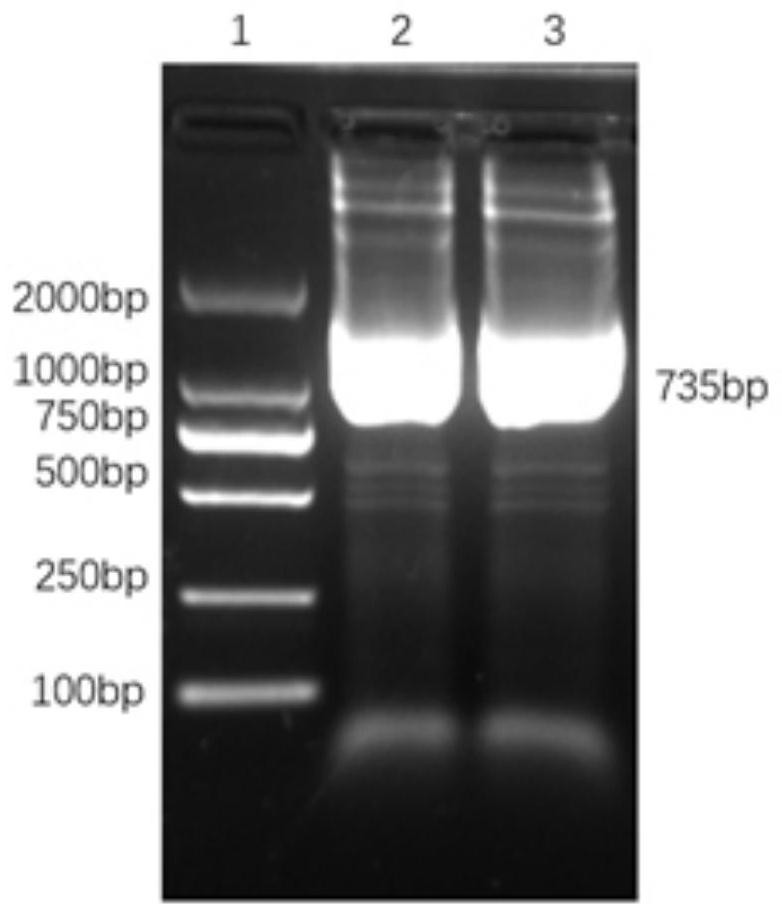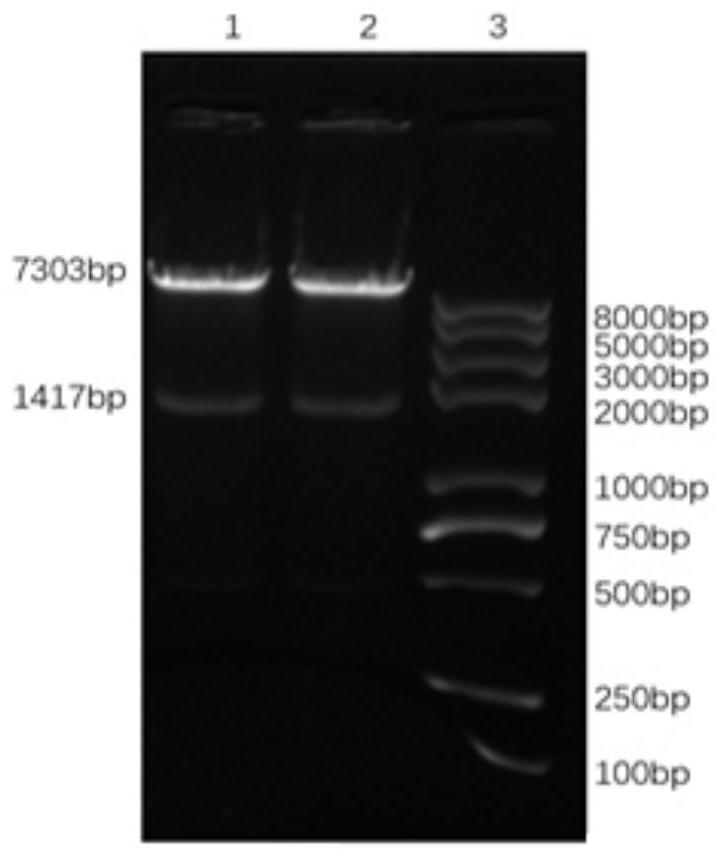Chimeric antigen receptor targeting BCMA and application thereof
A chimeric antigen receptor, targeting technology, applied in the field of biomedicine, can solve problems such as recurrence or ineffectiveness, achieve strong killing effect, and prevent off-target effects.
- Summary
- Abstract
- Description
- Claims
- Application Information
AI Technical Summary
Problems solved by technology
Method used
Image
Examples
Embodiment 1
[0102] Example 1: Preparation of antigen recognition region BCMA scFv in Chimeric Antigen Receptor
[0103] A. Commercial synthesis of the BCMA scFv based on the sequence.
[0104] Cloning of B.BCMA scFv
[0105] 1. Extract the total RNA of mouse anti-human BCMA monoclonal antibody hybridoma cell line: at 5×10 6 Add 1 ml of RNAiso Plus (Takara) to the cells and mix by pipetting. Add 200 μl of chloroform, turn upside down and vortex to mix. 4°C, 12000rpm, centrifugation for 5 minutes. Pipette the supernatant into a 1.5ml EP tube, add the same volume of isopropanol, and mix by gently inverting. 4°C, 12000 rpm, centrifugation for 15 minutes. Pre-chill 75% ethanol at 4°C to precipitate RNA, and dissolve total RNA in 50 μl DEPC water.
[0106] 2. Synthesize the first strand of cDNA by reverse transcription: prepare a PCR reaction system (20 μl) as follows: Oligo d(T)15Primers: 2 μl; M-MLV (200u / μl): 1 μl; dNTP (each 2.5 mM): 1 μl; DTT ( 0.1M): 2 μl; First strand buffer (5×):...
Embodiment 2
[0164] Example 2: Construction of Chimeric Antigen Receptor Vectors
[0165] 1. The plasmid containing the CD8α-4-1BB-CD3ζ fragment was digested with Nhe I and EcoR I endonucleases to obtain the CD8α-4-1BB-CD3ζ fragment, the amino acid sequence of which is shown in SEQ ID NO.18. The plasmid containing the CD8α-4-1BB-CD3ζ fragment can be prepared by any suitable method in the prior art.
[0166] 2. The BCMAscFv (mLH) and BCMAscFv (mHL) fragments obtained in Example 1 are connected with the target vector, and the constructed BCMA-VL-VH-CD8α-4-1BB-CD3ζCAR and BCMA-VH-VL-CD8α- The 4-1BB-CD3ζCAR destination vector was identified by restriction enzyme digestion with NheI and NotI. The result is as image 3 As shown, the results of enzyme digestion indicated that the positive clones contained the target band and were correctly identified by sequencing. The vector diagram is as Figure 4 shown.
[0167] 3. Commercially synthesize the humanized sequence after computer simulation, ...
Embodiment 3
[0168] Example 3: Preparation of Chimeric Antigen Receptor BCMA scFv-CD8α-4-1BB-CD3ζ Lentiviral Modified T Cells
[0169]1. The BCMAscFv-CD8α-4-1BB-CD3ζ (mLH, mHL, hLH, hHL) expression plasmid and packaging plasmids PRSV-Rev, pMDlg-PRRE, pMD were extracted with EndoFree Plasmid Maxi Kit (QIAGEN). 2G. The four plasmids were transfected with PEI transfection reagent (polyscience company) according to the ratio of 12.2:4.11:8.75:3.5 (see the instruction manual of PEI transfection reagent for specific methods). The fresh culture medium was replaced 12 hours after transfection, and the virus supernatant was collected 24 hours and 48 hours later, centrifuged at 4°C, 3000 rpm for 15 minutes, filtered through a 0.45 μm filter, and then ultracentrifuged at 50,000 g at 4°C for 2.5 hours. Concentrate 10 times and store at -80°C.
[0170] 2. Preparation of T cells: Take 10 ml of fresh healthy human peripheral blood, and use RosetteSep T cell enrichment Cocktail (Stemcell Company) and Fi...
PUM
 Login to View More
Login to View More Abstract
Description
Claims
Application Information
 Login to View More
Login to View More - R&D Engineer
- R&D Manager
- IP Professional
- Industry Leading Data Capabilities
- Powerful AI technology
- Patent DNA Extraction
Browse by: Latest US Patents, China's latest patents, Technical Efficacy Thesaurus, Application Domain, Technology Topic, Popular Technical Reports.
© 2024 PatSnap. All rights reserved.Legal|Privacy policy|Modern Slavery Act Transparency Statement|Sitemap|About US| Contact US: help@patsnap.com










